#Kung-Wei Lu
Text
Raid on the Lethal Zone
Raid on the Lethal Zone (2023)
#HermanYau #YuanDu #JasonGu #YaoHuang #Kung-WeiLu #HaoOu
Mehr auf:
绝地追击 Jahr: 2023
Genre: Action / Drama / Thriller
Regie: Herman Yau
Hauptrollen: Yuan Du, Jason Gu, Yao Huang, Kung-Wei Lu, Hao Ou, Bing Shao, Pengyuan Shi, Ting Wang, Guangyu Xu, Yong You, Haoming Yu …
Filmbeschreibung: In den 1990er Jahren riskiert eine Spezialeinheit in Yunan unter dem Codenamen 8077 ihr Leben im Kampf gegen Katastrophen und Drogendealer. Während ihrer Missionen stehen sie…

View On WordPress
0 notes
Photo

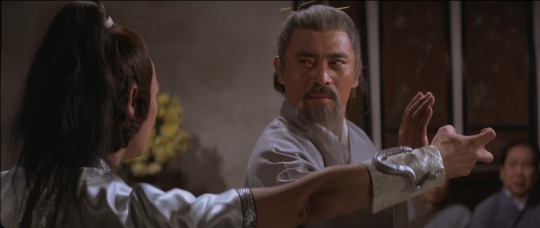
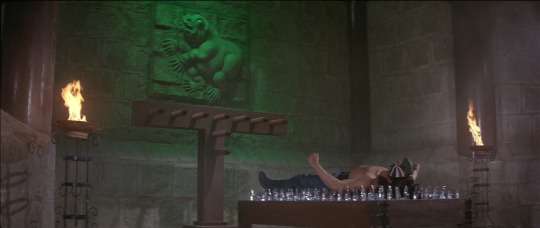



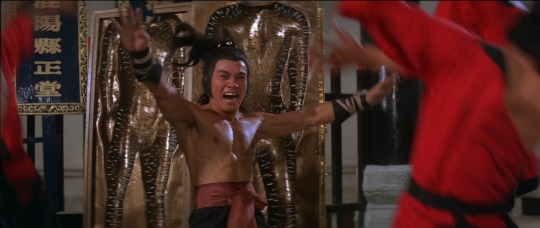



The Five Venoms (1978)
#The Five Venoms#five deadly venoms#chang cheh#shaw brothers#chiang sheng#phillip kwok#sun chien#lu feng#lo meng#wai pak#johnny wang lung-wei#martial arts movies#kung fu movies#70s movies#hong kong movies#venom mob
44 notes
·
View notes
Text
Daily Selections From Lao-Tzu’s Tao Te Ching – March 21, 2024
“Which is more vital
fame or health
which is more precious
health or wealth
which is more harmful
loss or gain
the deeper the love
the higher the cost
the bigger the treasure
the greater the loss
who knows contentment
thus suffers no shame
and who knows restraint
encounters no trouble
while enjoying a long life”
-Lao-tzu-
(Taoteching, verse 44, translation by Red Pine)
HUANG MAO-TS’AI says, “What the world calls fame is something external. And yet people abandon their bodies to fight for it. What the world calls wealth is unpredictable. And yet people sacrifice their bodies to possess it. How can they know what is vital or precious? Even if they succeed, it’s at the cost of their health.”
SSU-MA KUANG says, “Which is more harmful: to gain wealth and fame and lose one’s health or to gain one’s health and lose wealth and fame?”
LU HUI-CH’ING says, “Heroes seek fame and merchants seek wealth, even to the point of giving up their lives. The first love fame because they want to glorify themselves. But the more they love fame, the more they lose what they would really glorify. Hence, the cost is high. The second amass wealth because they want to enrich themselves. But the more wealth they amass, the more they harm what they would truly enrich. Hence, the loss is great. Meanwhile, those who cultivate Virtue know the most vital thing is within themselves. Thus, they seek no fame and suffer no disgrace. They know the most precious things is within themselves. Thus, they seek no wealth and encounter no trouble. Hence, they live long.”
LI HSI-CHAI says, “If we love something, the more we love it, the more it costs us. If we treasure something, the more we treasure it, the more it exhausts us. A little of either results in shame. A lot results in ruin. And regret comes too late. People who are wise are not like this. They know that they have everything they need within themselves. Hence, they do not seek anything outside themselves. Thus, those who would shame them find nothing to shame. They know their own limit, and their limit is the Tao. Hence, they don’t act unless it is according to the Tao. Thus, those who would trouble them find nothing to trouble. Hence, they survive, and surviving, live long.”
HO-SHANG KUNG says, “Excessive sensual desire exhausts our spirit. Excessive material desire brings us misfortune. The living keep their treasures in storerooms. The dead keep their treasures in graves. The living worry about thieves. The dead worry about grave robbers. Those who know contentment find happiness and wealth within themselves and don’t exhaust their spirit. If they should govern a country, they don’t trouble their people. Thus, they are able to live long.”
HUAI-NAN-TZU says, “Long ago Chih Po-ch’iao attacked and defeated Fan Chung-hsing. He also attacked the leaders of the states of Han and Wei and occupied parts of their territories. Still, he felt this wasn’t enough, so he raised another army and attacked the state of Yueh. But Han and Wei counterattacked, and Chih’s army was defeated near Chinyang, and he was killed east of Kaoliang. His skull became a drinking bowl, his kingdom was divided among the victors, and he was ridiculed by the world. This is what happens when you don’t know when to stop.”
4 notes
·
View notes
Text
百家姓在全球各个华语地区的拼音
中文 中國大陸 台灣 香港 澳門 新加坡 馬來西亞 越南 韩国
1 赵 Zhao Chao Chiu Chio Chow Teoh/ Chew/ Tiew Trieu Jo/Cho
2 钱 Qian Chien Chin Chin Zee Chien/Chen Tien Joen/Chun
3 孙 Sun Sun Suen Sun Soon Soon/Sun/Shun/Song Ton Son
4 李 Li Li / Lee Li / Lee Lei Lee Lee/Li Ly Lee / Rhee/ Yi
5 周 Zhou Chou Chow / Chau Chao Chew Chew / Cheu / Chou / Chow / Chiew Chu Ju/Chu
6 吴 Wu Wu Ng Ng Goh Ng / Goh / Ngo/ Ngu Ngo Oh
7 郑 Zheng Cheng Cheng Cheang Tay Ching / Tang / Tey / Tay / Tee / Teh / Cheng / Chin / Chang / Chung / Chiang Trinh
8 王 Wang Wang Wong Vong / Wong Ong / Wong Ong / Ng / Wong / Wang / Bong / Heng Vuong Wang
9 冯 Feng Feng Fung Fong Foong/Fung/Fong Phung Pung
10 陈 Chen Chen Chan Chan Tan / Chan / Ting Chan / Chin / Chen / Tan / Tang / Ting / Sin Tran Jin/Chin
11 褚 Chu Chu Chu Chu Too/Toh
12 卫 Wei Wei Wai Wai Wee/Wei Vi Ui/Oui
13 蒋 Jiang Chiang Cheung Cheong Chiang/Cheong/Chiong Tuong Jang/Chang
14 沈 Shen Shen Shum / Sum Sam Sim Sim/Shim/Shun/Shum Sim
15 韩 Han Han Hon Hon Hon/Hong Han Han
16 杨 Yang Yang Yeung Ieong Yeo / Yong Yong / Yeo / Yeoh / Eow / Yeong / Yew Duong Yang
17 朱 Zhu Chu Chu Chu Choo Chu/Choo/Jee/Jeh Chau Chu/ Joo
18 秦 Qin Chin Chun Chin/Ch'ng Tan Jin/Chin
19 尤 You Yu Yau Iao Yew/You Vuu
20 许 Xu Hsu Hui Hoi Hee / Koh Khu / Khoo / Khor / Khow / Hoo / Hooi / Khaw / Hii Hu Heo/Huh
21 何 He Ho Ho Ho Hoh Ho/Hoh/Hor Ha Ha
22 吕 Lu Lu Lui Loi Loh/Lei/Lui/Lee La/Lu Yeo/Ryeo
23 施 Shi Shih Sze Si See/Sii/Sih
24 张 Zhang Chang Cheung Cheong Cheong Cheong / Chong / Teo / Chang / Teoh / Tiong Truong Jang/Chang
25 孔 Kong Kung Hung Hong Kong/Khong/Kung Khong Gong/Kong
26 曹 Cao Tsao Cho / Tso Chou Cheng/Choo/Cho/Chu/Chao Tao Cho/Jo
27 严 Yan Yen Yim Im Yam/Ngim Nghiem Im
28 华 Hua Hua Wa / Wah Wa Hoa Wha/Wah/Wa
29 金 Jin Chin Kam Kam Kim/King Kim Kim
30 魏 Wei Wei Ngai Ngai Ngui/Gui/Woi Nguy Ui/Oui
31 陶 Tao Tao To Tou Tho/To/Too/Toh Dao Do/To
32 姜 Jiang Chiang Keung Keong Khiang/Kiang Giang Kang/Gang
33 戚 Qi Chi Chik Chek Cheok
34 谢 Xie Hsieh Tse Che Cheah / Tay / Chia Cheah / Chiah / Chia / Seah / Sia / See Ta Sa
35 邹 Zou Tsou Chau / Chow Chao Chew/Chou/Chu
36 喻 Yu Yu Yu U Yu/Yho/Yuh You/Yu
37 柏 Bai Pai Pak Pak
38 水 Shui Shui Sui Soi Shu/Tshui
39 窦 Dou Tou Tau Tao
40 章 Zhang Chang Cheung Cheong Cheong/Chong/Teo/Tiong/Tong
[编辑] 百家姓41-80
中文 中國大陸 台灣 香港 澳門 新加坡 馬來西亞 越南 韩国
41 云 Yun Yun Wan Wan Woon/Wun/Yun/Yung
42 苏 Su Su So Sou Soh Soh / Saw / Soo To
43 潘 Pan Pan Poon / Pun Pun Phua Phua / Pan / Pang / Phang Phan Ban
44 葛 Ge Ko Kot Gal
45 奚 Xi Hsi Hai Kai Hae
46 范 Fan Fan Fan Fan Fung / Fam / Fang / Hwang Pham Bum
47 彭 Peng Peng Pang Pang Pang Peng/Pang/Phang Paeng
48 郎 Lang Lang Long Long Lang
49 鲁 Lu Lu Lo Lou Loo Loo/Loh/Lu Noh
50 韦 Wei Wei Wai Wai Wai/Wei/Vei Vi
51 昌 Chang Chang Cheung Cheong Cheong/Chang/Cang Xuong
52 马 Ma Ma Ma Ma Beh / Mah / Mha / Ma Ma Ma
53 苗 Miao Miao Miu Mio
54 凤 Feng Feng Fung Fong Fong
55 花 Hua Hua Fa Fa Faa/Fah/Fha Hoa
56 方 Fang Fang Fong Fong Pung / Fang / Fong / Phun / Huong Phuong Bang
57 俞 Yu Yu Yu U Je / Yii You/Yu
58 任 Ren Jen Yam Iam Yam/Ngam/Yim/Ngieng/Ngiam Nham Rim/Yim
59 袁 Yuan Yuan Yuen Un / Iun Yuan / Yuen / Ngen Vien Won
60 柳 Liu Liu Lau Lao Liew/Liu/Lew Lieu You/Yu/Ryu
61 酆 Feng Feng Fung Fong
62 鮑 Bao Pao Pau Pao
63 史 Shi Shih Sze Si Sa
64 唐 Tang Tang Tong Tong Thang / Thong / Tang / Tong / Thong Duong
65 費讀「秘」 Pei Pei Pei Pai
66 廉 Lian Lien Lim Lim
67 岑 Cen Tsen Sum / Shum Sam Sim
68 薛 Xue Hsueh Sit Sit Sik / Sit / Silk Seol/Sul
69 雷 Lei Lei Lui Loi Lui / Looi / Lewe / Lei
70 賀 He Ho Ho Ho Hor/Hoo
71 倪 Ni Ni Ngai Ngai Geh / Nga / Ngam
72 湯 Tang Tang Tong Tong Thong / Tang / Thang
73 滕 Teng Teng Tang Tang Thang
74 殷 Yin Yin Yan Ian Yam / Ngam
75 罗 Luo Lo Law / Lo Lo Lo / Lau / Low / Loh La Rah/Na
76 毕 Bi Pi But Pat Tat
77 郝 Hao Hao Kok
78 邬 Wu Wu Wu Vu / Wu Woo / Voo / Woh / Wu / Vu O
79 安 An An On On An An / Ahn
80 常 Chang Chang Sheung Seong
[编辑] 百家姓81-120
中文 中國大陸 台灣 香港 澳門 新加坡 馬來西亞 越南 韩国
81 乐 讀「洛」或「惡」 Yue Yueh Lok/ Ok Lok/ Ok
82 于 Yu Yu Yu U
83 时 Shi Shih See / Sze Si
84 傅 Fu Fu Foo Fu Fu/Foo/Foh
85 皮 Pi Pi Pei Pei
86 卞 Bian Pien Pin Pin Byun
87 齐 Qi Chi Chai Chai
88 康 Kang Kang Hong Hong Gang/Kang
89 伍 Wu Wu Ng Ng Ng Ng/Ngo/Ngoh/Wu/Wuh/Woo
90 余 Yu Yu Yu U Yee/Tsia/Tse
91 元 Yuan Yuan Yuen Un / Iun
92 卜 Bu Pu Puk Pok/Puu
93 顾 Gu Ku Koo Ku Koe
94 孟 Meng Meng Mang Mang Mang/Meng Maeng
95 平 Ping Ping Ping Peng
96 黄 Huang Huang Wong Vong / Wong Bong / Boong / Ng / Ong / Ooi / Wong / Wee Hwang
97 和 He Ho Wo Vo Hoo/Woh/Woo/Wo Hwa
98 穆 Mu Mu Muk
99 萧 Xiao Hsiao Shiu / Siu Sio Seow/Siew/Siau/Siaw/Sew/Siu/Seu
100 尹 Yin Yin Wan Wan Yoon
101 姚 Yao Yao Yiu Io Yeo Yeo / Yeoh / Yew / Yow
102 邵 Shao Shao Siu / Shiu Sio Shaw Shao/Shaw/Sao/Shau
103 湛 Zhan Chan Cham
104 汪 Wang Wang Wong Vong / Wong Wang/Wong/Vang
105 祁 Qi Chi Kei
106 毛 Mao Mao Mo Mou Bo / Boo / Moh / Moo Mo
107 禹 Yu Yu Yu U
108 狄 Di Ti Tik / Dick Tek
109 米 Mi Mi Mai Mai
110 贝 Bei Pei Pui Pui
111 明 Ming Ming Ming Meng Myeong /Myung
112 臧 Zang Tsang Chong
113 计 Ji Chi Kai Kai
114 伏 Fu Fu Fuk Fok
115 成 Cheng Cheng Shing / Sing Seng Sang/Shang//Tshan/Tshang Sung/ Seong
116 戴 Dai Tai Tai Tai Tai/Thai/Dai/Dhai
117 谈 Tan Tan Tam Tam
118 宋 Song Sung Sung Song Song Shong/Song/Sung Song
119 茅 Mao Mao Mau Mao
120 庞 Pang Pang Pong Pong Phong/Pong/Pang
2 notes
·
View notes
Video
undefined
tumblr
Whenever I’m capturing my screen for gifs, my computer always picks up the music I’m listening to while I’m working. Sometimes it really goes with what I’m watching, like in this instance. I thought I’d share :)
The movie is Invincible Shaolin (1978), the song is ラスト・タンゴ・イン・パリ by Joe Hisaishi.
#video#screen capture#Venom Mob#Invincible Shaolin#joe hisaishi#kung fu#sun chien#suen shu pau#kuo chui#lau fong sai#johnny wang lung wei#chow kin ping#Lu Feng
15 notes
·
View notes
Text
"Ts‘ao Ts‘ao or Ts‘ao Kung, afterwards known as Wei Wu Ti [A.D. 155-220]. There is hardly any room for doubt that the earliest commentary on Sun Tzŭ actually came from the pen of this extraordinary man, whose biography in the San Kuo Chih reads like a romance.[91] One of the greatest military geniuses that the world has seen, and Napoleonic in the scale of his operations, he was especially famed for the marvelous rapidity of his marches, which has found expression in the line "Talk of Ts‘ao Ts‘ao, and Ts‘ao Ts‘ao will appear." Ou-yang Hsiu says of him that he was a great captain who "measured his strength against Tung Cho, Lu Pu and the two Yuan, father and son, and vanquished them all; whereupon he divided the Empire of Han with Wu and Shu, and made himself king. It is recorded that whenever a council of war was held by Wei on the eve of a far-reaching campaign, he had all his calculations ready; those generals who made use of them did not lose one battle in ten; those who ran counter to them in any particular saw their armies incontinently beaten and put to flight." Ts‘ao Kung's notes on Sun Tzŭ, models of austere brevity, are so thoroughly characteristic of the stern commander known to history, that it is hard indeed to conceive of them as the work of a mere litterateur. Sometimes, indeed, owing to extreme compression, they are scarcely intelligible and stand no less in need of a commentary than the text itself. As we have seen, Tsao Kung is the reputed author of the Hsin Shu, a book on war in 100,000 odd words, now lost, but mentioned in the Wei Shu."
- The Art of War, Lionel Giles, 20th century
"[Cao Cao] extensively read many books, and especially liked those relating to military strategies. He copied and collected military strategies from many schools [of thought], naming it Collections of [Military Strategies]. He also annotated 13 volumes of Sun Wu['s work], all of which have been passed to this generation."
- Miscellaneous Accounts on Similarities and Differences, Sun Sheng, 4th century
Even after 1,600 years, Cao Cao's annotations on SunZi's Art of War is preserved!
15 notes
·
View notes
Note
hii there!! could i please please ask for some chinese fc recs? female preferably between mid/late twenties to thirties? overall badass sort of vibe? and bonus if they’ve had short hair previously but not necessary! sorry if it’s really precise!!
Constance Wu (1982) Taiwanese - Hustlers.
Du Juan (1982) Chinese.
Li Jun Li (1983) Chinese - Wu Assassins.
Lu Zi Zhen (1984) Chinese.
Jing Lusi (1985) Chinese.
Wei Ren (1986) Chinese.
Jessica Matten (1985) Métis, Saulteaux-Cree / Chinese and British - Tribal.
Meng'er Zhang (1987) Chinese - Shang-Chi.
Xin Zhilei (1986) Chinese.
Janel Parrish (1988) Han Chinese / Irish, English, German.
Yang Ge (1988) Chinese.
Ni Ni (1988) Chinese.
Melissa O'Neil (1988) Chinese / Irish, possibly other.
Jing Tian (1988) Chinese - Pacific Rim: Uprising.
JuJu Chan Szeto (1989) Hongkonger.
Jessica Henwick (1992) Chinese Singaporean / English - Iron Fist.
Olivia Liang (1993) Chinese. - Kung Fu & Legacies.
Gao Yu Er (1993) Chinese - Guardian.
Natasha Liu Bordizzo (1994) Chinese / Italian.
Kiki Xu (1995) Chinese - Parallel Lost.
Leah Lewis (1996) Chinese.
Chelsea Zhang (1996) Chinese.
Mei Pang (1996) Chinese.
Elizabeth Lazan (?) Chinese Singaporean / English and Italian.
Here ya go!
18 notes
·
View notes
Note
Why do all venoms say they are from Taiwan?
Hello! Thank you for sending us an ask!
Most of the members of the Venom Mob are actually from Taiwan, which is why they would say that they are. Lu Feng, Chiang Sheng, and Kuo Chui all grew up in Taipei, and all three were born in Taiwan. Sun Chien was born in Taiwan as well, though he didn't meet the other members of the Venom Mob until they were all in Hong Kong.
Lo Mang grew up in Hong Kong and Wei Pai was born in China, though we are not sure where exactly.
It might seem surprising that the majority of the Venom Mob—a group of actors associated with specifically Chinese films—are from Taiwan. The fact of the matter is, despite China's tight borders and various conflicts with surrounding countries at the time, the directors of Shaw Bros were very willing to source their actors and crewmembers from outside of China. Chang Cheh especially.
And we're glad they did, because otherwise the bulk of the Venoms never would have appeared on screen alongside other Shaw Bros greats, and become kung fu legends in their own rights.
6 notes
·
View notes
Text
Rekordabsteiger vor dem neunten Aufstieg? – Der #FCN-Saisonausblick 2019/2020
Da capo. Der Ausflug in die Bundesliga war kurz. Nach nur einem Jahr beendete der Club die Saison mit der schlechtesten Leistung in dieser Liga aller Zeiten. Die zweifelhafte Ehre des Titels „Rekordabsteiger“ haben wir seitdem alleine inne, sonst bleibt nicht viel Nennenswertes von der letzten Spielzeit.
Positiv ist, dass alle – auch und vor allem die Fans! – von Anfang an wussten, dass der Aufstieg eigentlich zu früh kam, dass das Team nicht erstligareif ist. Die Zeit, sich mit dem Abstieg anzufreunden, war erfreulich lange, eigentlich stand es spätestens mit dem 0:7 in Dortmund fest, wohin die Reise gehen wird. Entsprechend sanft war der Aufschlag, entsprechend gutmütig die Fans, entsprechend schnell der Blick wieder nach vorne gerichtet.
Und das tue ich jetzt auch. In Nürnberg wurde viel umgekrempelt, hauptsächlich auf der Managementebene. Der neue Sportvorstand Palikuca verfolgt ein anderes Modell als seine Vorgänger, er lässt sich fachlich unterstützen und bindet Altstars in die Vereinsarbeit mit ein. Er schafft damit eine Aufbruchstimmung, die nicht einmal von schmerzhaften Abgängen und zweispältigen Testspielen getrübt wird.
Apropos. Wie üblich werfe ich mal einen Blick auf die, die weg sind und die, die neu dabei sind. Es darf aber der Hinweis nicht fehlen, dass das Transferfenster noch über einen Monat lang offen steht. Bis Anfang September kann noch viel passieren.
Abgänge
Dass Eduard Löwen nicht mit in die zweite Liga gehen wird, war eigentlich klar. Hertha BSC bekam letztlich den Zuschlag und zahlt dafür vermutlich sieben Millionen Euro – für den Club eine wahnsinnige Summe.
Ewertons Abschied kam dagegen überraschender. Der Innenverteidiger war Sicherheitsanker in der Aufsteigssaison und hielt auch gegen Ende der letzten Saison oftmals die Defensive stabil. Konkurrent HSV sicherte sich die Dienste des Brasilianers. Es ist ein Verlust, der mit zwei Millionen Euro ein wenig versüßt wird. Und ob der mittlerweile 30-Jährige noch viele gute Saisons hat, wird sich auch noch zeigen müssen.
Trotz aller Loyalitätsversprechen ging auch Tim Leibold – ebenfalls zum HSV, die sich den Vorwurf gefallen lassen müssen, die Liga kaputtzukaufen, damit es kommende Spielzeit doch mal mit dem Aufstieg klappt. „Leibe“ macht die Hamburger angeblich um 1,8 Millionen Euro ärmer.
Nachdem Torwart Christian Mathenia einen Fünfjahresvertrag unterschrieben hatte, war für Fabian Bredlow klar, dass seine Chancen, Stammtorhüter zu werden, kaum noch vorhanden sind. Der 24-Jährige hat noch was vor in seiner Karriere, also musste er wechseln. Mitabsteiger Stuttgart gibt Aysl und zahlt sogar noch 300.000 Euro dafür. Bredlow wird sich aber auch in Schwaben erst einmal auf die Ersatzbank setzen müssen.
Edgar Sallis Vertrag wurde nicht verlängert. Er wurde in den letzten Jahren oft für seine Entscheidungen auf dem Rasen kritisiert, dem gemeinen Fan war nie so richtig klar, warum er immer und immer wieder aufgestellt wurde. Schommers war das Ende letzter Saison auch nicht mehr klar. Salli hat noch keinen neuen Verein.
Der viel kritisierte einzige Winterzugang Ivo Illisevic wurde in der Rückrunde drei Mal eingewechselt, hat insgesamt 36 Minuten gespielt und muss sich jetzt schon wieder einen neuen Arbeitgeber suchen. Transfertechnisch ein absoluter Fehlschlag.
Yuya Kubo wurde einst mit viel Vorschusslorbeeren geholt. Manchmal zeigte er auch, wozu er in der Lage wäre, wenn ihm das restliche Team dabei hilft. Meistens mussten seine Einsätze jedoch unter „stets bemüht“ verbucht werden – das hat er mit dem kompletten Team gemein. Kubos Leihe endete vertragsgemäß, der Club machte kein Kaufangebot.
Auch die Leihe von Robert Bauer ist beendet, er kehrt zu Werder Bremen zurück (die ihn wohl auch nicht wirklich wollen).
Timothy Tillmann kam zu Ausbildungszwecken von den Bayern nach Nürnberg, hat einige Spiele in der zweiten Mannschaft bestritten und auch ein paar Startelf-Einsätze in der ersten (allerdings nie über die volle Spielzeit). Auch seine Leihe wurde plangemäß beendet.
Ausgeliehen von Sporting Lissabon war auch Matheus Pereira, definitiv einer der besten im letztjährigen Team. Der Club war durchaus an einer Übernahme interessiert, es fehlte allerdings das nötige Kleingeld in der Kasse.
Extern ausgebildet (lies: an andere Vereine ausgeliehen) werden Jakov Medic und Dominik Steczyk.
Insgesamt hat der Club über elf Millionen Euro an Transfererlösen generiert. Kaufmännisch war das also ein Erfolg. Dass dahinter aber auch schmerzhafte Abgänge stehen, sollte das nicht kaschieren. Richtig gute Spieler wollen halt nicht zweite Liga spielen und manche folgen einfach nur der Verlockung des Geldes – selbst, wenn es in die gleiche Liga führt.
Neuzugänge
Der teuerste Neueinkauf (kolportierte 2,5 Millionen Euro) ist Nivola Dovedan, der von Heidenheim kommt. Er machte schon in den Testspielen einen guten Eindruck als Offensivkraft. Hoffen wir mal, dass er das Geld wert ist.
Mit gut 2 Millionen Euro ebenso nicht im Sonderangebot war Iuri Medeiros, der wie Pereira von Sporting Lissabon kommt, im Gegensatz zum Rückkehrer aber mit einem festen Arbeitsvertrag. Pereira habe nur Gutes über den Club erzählt, sagte er zum Einstand. Er wird ebenfalls die Offensive verstärken.
Als Ewerton-Ersatz ist Asger Sörensen für eine halbe Million aus Salzburg in die Noris gezogen. Der 23-Jährige machte in den Testspielen schon gehörig auf sich aufmerksam.
Robin Hack kommt aus Hoffenheim, angeblich auch für eine halbe Million Euro. Die Offensivkraft ist für mich noch ein Fragezeichen.
Für 450.000 Euro haben wir den Mittelstürmer Fabian Schleusener bei Freiburg eingekauft. Ich habe sonst noch nichts von ihm mitbekommen. Laut Transfermarkt besteht bei ihm noch ein Trainingsrückstand.
Tim Handwerker hat nicht nur einen bodenständigen Namen. Der für 300.000 Euro von Erstligaaufsteiger Köln kommende 21-Jährige verstärkt die Defensive.
Oliver Sorg kommt von Mitabsteiger Hannover 96, sogar ablösefrei. Er dürfte interessierten Fußballfans bekannt sein. Dem Vernehmen nach ein schmerzhafter Abgang für Hannover, ein erfreulicher also für uns.
Felix Lohkemper kommt vom Magdeburg und hat sich dort einen Namen gemacht. Die Offensivkraft hat viel für Magdeburg geleistet, konnte aber auch nicht deren Abstieg verhindern. Bisher wurde er seinen Vorschusslorbeeren gerecht.
Andreas Lukse ist Torwart und wird sich vermutlich mit Patric Klandt um die Nummer 2 hinter Mathenia streiten. Da Klandt schon vorher Nummer 3 war und Lukse Trainer Canadi schon aus Altach kennt, ist das Ergebnis vermutlich erstmal klar.
Fabian Nürnberger hat natürlich den besten Namen aller Club-Spieler. Der 19-Jährige wurde aus der U21 befördert. Es kann gut sein, dass er eine Stammkraft in der ersten Mannschaft wird.
Rund sechs Millionen für Neuzugänge bei rund elf Millionen an Transfereinnahmen – der Club hat zumindest wieder das Ziel erreicht, einen ordentlichen Transferüberschuss zu erzielen. Deshalb gilt aber auch wie so oft die bange Frage: Sind die Neuen eine echte Verstärkung? Können sie die Abgänge ausgleichen, am besten noch übertreffen? Sind die Lücken gefüllt, die im Kader herrschen?
So oder so, es wird ziemlich sicher noch weitere Neuzugänge geben, das hat der Club bereits angekündigt.
Der aktuelle Kader

Der Kader des 1. FC Nürnberg 2019/20 (Foto: 1. FC Nürnberg)
Der Kader (Stand: 23.07.2019) setzt sich also wie folgt zusammen:
Tor: 26 Mathenia, 1 Klandt, 30 Lukse
Abwehr: 2 Goden, 4 Sörensen, 22 Valentini, 28 Mühl, 33 Margreitter, 15 Nürnberger, 25 Sorg, 6 Handwerker
Mittelfeld: 8 Dovedan, 10 Kerk, 18 Behrens, 31 Petrak, 20 Jäger, 21 Palacios, 29 Erras, 35 Fuchs (Mittelfußbruch), 38 Rhein, 17 Hack, 40 Medeiros
Angriff: 7 Lohkemper, 9 Ishak, 11 Zrelak, 19 Knöll, 23 Schleusener, 24 Misidjan (Kreuzbrandriss)
Saisonausblick
Der Club will „in den nächsten zwei Jahren“ aufsteigen. Dass da direkt ein Backup installiert wurde, mag vor allem daran liegen, dass die kommende Zweitligasaison mit drei Bundesligaabsteigern nicht einfach wird. Auch Stuttgart und Hannover wollen sofort wieder rauf, der HSV ist auch noch am Start (und kauft gerade die Liga kaputt), an weiteren ambitionierten Vereinen mangelt es dem Unterhaus auch nicht. Ob der Club in dieser Gemengelage tatsächlich einen der ersten drei Plätze ergattert, ist deshalb fraglich.
Fraglos will der Club oben mitspielen. Wenn sich das Team gefunden hat, traue ich ihm das obere Drittel zu, also irgendwas zwischen Platz 1 und 6. Aber ehrlich gesagt glaube ich auch daran, dass es ein Jahr später, wenn die großen Fische weg sind, realistischer wird.
Wie immer jedoch lasse ich mich gerne positiv überraschen.
* * *
Ende des Textes. Bitte werfen Sie eine Münze ein!
spenden
(Original unter: https://1ppm.de/2019/07/fcn-saisonausblick-2019-2020/)
1 note
·
View note
Text
The MALineage Project Site
The Martial Arts Lineage Project website had attempted to collect lineage history and details of any martial art or person; unfortunately it is not always accessible; it partially appears on its Facebook site.
Martial Arts Lineage Project-1
http://www.malineage.com/styles/Liuhebafaquan
http://www.malineage.com/node/16502/edit
Philosophy
Submitted by: dr_k_conor
There exists four 'documents', each carrying traits of history and philosophy principles that are generally presented to explain and teach LiuHe BaFa and boxing.
The First I will call the 'Cave Codex' alledgedly from found within a Mt. Hua Yo Shan 華嶽山 grotto 洞. Note that the Taoist Canon is divided into three dong 洞, "caves", "grottoes".
The Second is usually called the 'Five Word' verses or 'songs' 拳學 五字 歌訣; these are generally refered to as: quan2 xue2, 拳學, boxing knowledge in verse format, wu3 zi4 五字 5-character-word in length, and ge1 jue2 歌訣 'secret' verses of farewell.[this is often mistranslated as 'song'] The 'said' author is given as Li, 'East-wind' 李東風 Li Dong-feng whose name does not appear in any archaic Song Dynasty document. However, some LHBF student place great value in them.
The Third 'document' the actual exercise names, for the Nanjing 66-form series of Wu Yi-hui 六十六 起式 easily can be seen as differing and each form naming demonstrates the academic proficiency of Wu as a man of the arts.
Some of the 66-lines of 5-characters each also includes Chinese idioms and references to history, art, and music.
http://www.silkqin.com http://waterspirit6x8.tripod.com/id11.html
The Fourth 'document' collective are the commentaries written from various teachers to explain via verses; there are either simple two-word idioms, or longer 5 or seven word explanations.
The Six Combinations [also called 'harmonies' as unified concordances], LiuHe 六 合 are as follows:
>1. bodys' structure harmonizes with the minds' awareness,
>2. minds' awareness harmonizes with innate 'intent',
>3. intent harmonizes with the chi (energy-flow),
>4. chi harmonize with the 'spirit',
>5. spirit harmonizes with 'motion',
>6. motion harmonizes with the 'everywhere',
[ Note: that there are actually seven factors, Ti, Xin, Yi, Qi, Shen, Tung, Kung. ]
The Eight Methods [also called 'laws' or regulations], BaFa 八法 are as follows:
>1. Qi-Fa =Flow: Move the chi and concentrate the spirit
>2. Ku-Fa =Bone: Genuine-structural energy when bones are correct
>3. Hsing-Fa =Form: Shapes exchange freely, follow a model, pantomime
>4. Sui-Fa =Following: Flexible, adaptable, and coordinated in union
>5. Ti-Fa =Lifting: Lift the head upward as if suspended from space
>6. Huan-Fa =Reversal: The interchange of motions reverses and reciprocates
>7. Le-Fa =Limit: Restraint is needed to harness the dynamic forces
>8. Fu-Fa =Hidden: The intrinsic force arises from natural obscurity without method.
http://waterspirit6x8.tripod.com/id11.html http://waterspirit6x8.tripod.com/id55.html
One of the often addended 'Fourth Document' ideas, is not from LiuHe BaFa at all, they are from late 1800's to 1900's codification of bodily anatomy often used in the zhan zhuang 站樁 'standing post' of Yi quan 意 拳 from Wang Xiang-zhai who was 'friendly' and respectful to Wu and also from some teachers of Ba-kua-palming. These are often unnecessary and may also be misleading. http://waterspirit6x8.tripod.com/id12.html
A more relevant added teaching is from Huang Shou Ting, 黃手庭 of the Shanghai Wu Shu Association, who studied with Song Guang-yu 宋关羽 in Xu Shou; he discusses 8-physical aspects differently :
> Qi-Luo: 起 : 落 rising + falling
> Dong-Jing: 動 : 靜 moving + stillness
> Jin-Tui: 進 : 退 advance + retreat
> Kai-He: 開 : 合 open + close
> Yin-Yang: 陰 : 陽 in+out, soft+hard
> Xu-Shi: 虛 : 实 empty + full
> Wa-Qiao: 跃 : 远 jumping + bridging
> Liu-He: 六 : 合 internal six-pairs in harmony
http://waterspirit6x8.tripod.com/id11.html
Waterspirit6x8 Teachings; http://waterspirit6x8.tripod.com/id11.html
Liuhebafachuan; http://www.liuhebafachuan.com/
Liuhebafa verses; http://trinity.psnw.com/~dlmurray/6h8m1.html
Martial Arts Lineage Project-2
http://www.malineage.com/styles/Liuhebafaquan
http://www.malineage.com/node/16502/edit
LiuHe BaFa quan
Submitted by: dr_k_conor
LiuHeBaFa, LiuHe BaFa, Lok Hop Pat Fat,
Six-harmony, Eight-methods Boxing Exercise http://waterspirit6x8.tripod.com/id37.html
LiuHe BaFa 六合八法 is a collective of martial concepts and boxing exercises. http://waterspirit6x8.tripod.com/id21.html
LiuHe BaFa 六合八法 is also a collective of verse of concepts, the Six Harmonies 六合, obtainable by an understanding the utilization of Eight Methods 八法; each aspect is derived from archaic Chinese exercises and pugalisms. The LiuHe BaFa boxing is not directly derived from the modern versions of Tai-chi-, Xing-yi-, or Ba-kua-palm boxing. http://waterspirit6x8.tripod.com/id11.html
The verse name is often abbreviated in non-Chinese as LHBF or LHPF.
The core concepts and methods of the LiuHe BaFa are known to be derived from the 1900's manchurian Wu Yi-hui 吴翼翚 (1887-1958) who learned them from three differing teachers; Wu first taught them in Shanghai and later at the Nanjing National College of Martial Arts founded in 1928 and later became the Dean of Studies in 1936 [closed 1948].
Although many exercises and concepts are claimed to be from the real-life Song Dynasty Court Taoist Chen Tuan [ Bo ] 陳摶 , aka Chen Xi-yi 陳希夷 [d. 990] who was associated with the military General whose abilities made him the First Emperor of Song, Tai-zu, there exists no official or other records to support the common claim that the LiuHeBaFa- or its principle 'water' flowing or its' verse principles factually originated from the Court Taoist Chen Bo nor from his said mountain residence at Mt. Hua Yu 山 華嶽 in Shenxi Province. http://waterspirit6x8.tripod.com/id9.html
Popular naming has resulted in addending the syles' name to include this mythology: as the Chen Xi-yi Men 'sect' 華嶽希夷門 Hua Yue Xi-yi with LiuHeBaFa Boxing principles becoming: 華嶽 希門 (+) 六合八法拳.
The bonefide utility of the core LHBF verses, is that they are succinct and are applicable to all of other Chinese Internal martial arts. Although form and principle aspects of these internal martial arts [Tai-chi-, Xing-yi-, and Ba-gua-] are evident in the LHBF, there is a popular trend to classifiy the LHBF exercise as a 'fourth' art which it is not; the Chinese Martial Arts Association classifies it as a sub-style of Tai-chi-boxing. Perhaps in keeping with this method of distinction, some teachers have named their styling as a Hua-Yu Tai Chi-boxing exercise. http://waterspirit6x8.tripod.com/id58.html
There also now exists absorption of Yi-chuan, 'intuition' boxing fundamentals as set forth by founder Wang Xiang-zhai 王薌齋, (1886-1963), and his students in the LHBF system; this again results in further name changes and ,mixings with the applications of LiuHeBaFa-. http://waterspirit6x8.tripod.com/id5.html
Wang Xiang-zhai is known to have interacted and cross traded to other system styles while he was a teacher at the Nanking Martial Academy [Shao-lin, tai-chi, xing-yi, etc].
To further complicate understanding, Wu Yi-hui, from his earliest martial studies, learned a shaolin-related boxing called Lu Hong Ba Shih 呂紅八勢 sometimes also called Lu Hong boxing
呂紅拳. A careful study of Wu's 66-form version made during his time in Nanjing, does shows evidence of being embedded. The LHBF core exercises are called zhu zi 築基. http://waterspirit6x8.tripod.com/id52.html
LiuHeBaFaQuan; http://waterspirit6x8.tripod.com/
Liuhebafachuan; http://www.liuhebafachuan.com/
Lu Gui-yao, Chin Wo Athletic Assoc, Foshan PRC; http://www.liuhebafa-lgy.com/
Wu Ying-hua, S. China Institute Huainan, Anhui PRC; http://lhbflm.com/index.asp
Kam Tung, LHBF Academy,Hong Kong; http://www.liuhebafa.com.hk/
Liu Xiang-ling, Takoma PK, MD, USA; http://wudanglongmen.com/form.html
Martial Arts Lineage Project-3
http://www.malineage.com/node/16502/edit
Informational Links
Google Search
https://www.google.co.th/search?q=Liuhebafaquan&gws_rd=cr&ei=t8wAWOrkFcjovgTHw4-ICA
六合八法拳
六合八法拳 pdf
六合八法拳技
六合八法拳 金童
六合八法拳 金彤
Related Books
Related Videos
Related People
Style: Liuhebafaquan; http://www.malineage.com/styles/Liuhebafaquan
Martial Artist: Wang Xiangzhai; http://www.malineage.com/martial-artists/Wang-Xiangzhai
Style: Yao's Modern Yiquan; http://www.malineage.com/styles/Yaos-Modern-Yiquan
Links; http://www.malineage.com/styles/Liu-He-Ba-Fa-Chuan-nid26156
Teacher; http://www.malineage.com/martial-artists/Wu-Yi-Hui
http://www.malineage.com/martial-artists/Li-Dao-Li
http://www.malineage.com/martial-artists/Liang-Qi-Zhong
http://www.malineage.com/martial-artists/Liang-Zipeng
http://www.malineage.com/martial-artists/Moy-Lin-Shin
http://www.malineage.com/martial-artists/Li-Chung
http://www.malineage.com/martial-artists/Huang-Wei-Lun
> https://www.google.co.th/?gws_rd=ssl#q=Huang+Wei+Lun
> http://slantedflying.com/master-wei-lun-huang-passes-away/
http://www.malineage.com/styles/Liuhebafaquan?section=schools
http://www.malineage.com/styles/Liuhebafaquan?section=videos
http://www.malineage.com/styles/Liuhebafaquan?section=photos
http://www.malineage.com/styles/Liuhebafaquan?section=history
http://www.malineage.com/styles/Liu-He-Ba-Fa-Chuan
2 notes
·
View notes
Text



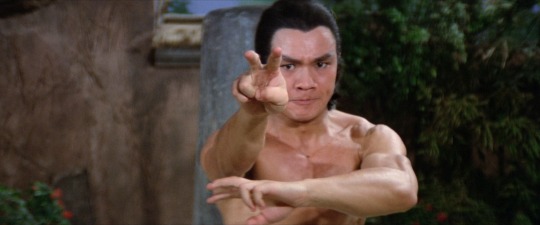

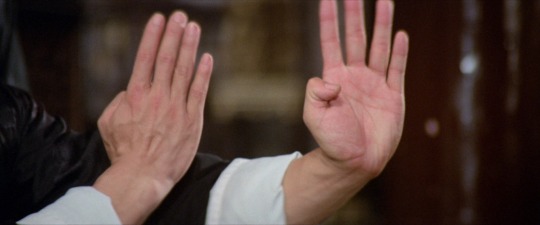

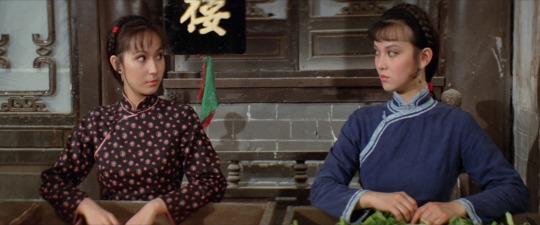





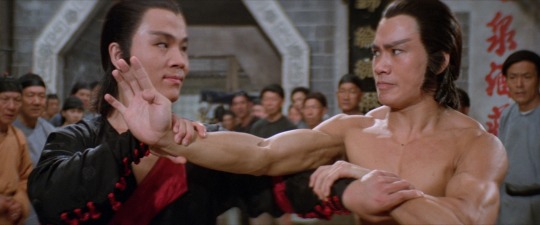


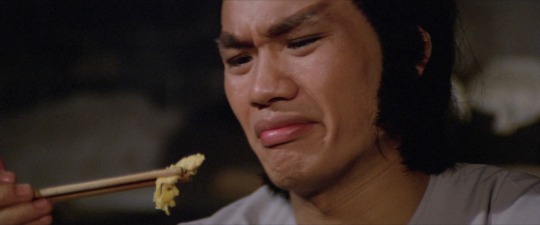
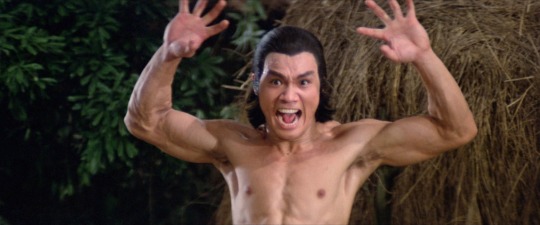
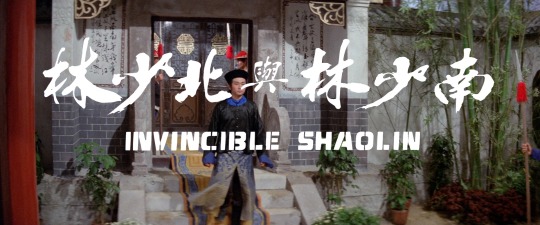
Invincible Shaolin (1978)
#film#film review#movie review#shaw brothers#martial arts#Invincible Shaolin#Chang Cheh#shaolin kung fu#venom mob#lo meng#sun chien#Chiang Sheng#lu feng#Phillip Kwok Chun-Fung#Wai Pak#Johnny Wang Lung-Wei
10 notes
·
View notes
Text
https://www.libertariantaoist.com/?p=9306
DAILY SELECTIONS FROM LAO-TZU’S TAO TE CHING — NOVEMBER 13, 2023
“The Way of Heaven
is like stringing a bow
pulling down the high
lifting up the low
shortening the long
lengthening the short
the Way of Heaven
takes from the long
and supplements the short
unlike the way of Humankind
which takes from the short
and gives to the long
who can take the long
and give it to the world
only those who possess the Way
thus do sages not depend on what they develop
or claim what they achieve
thus they choose to hide their skill”
-Lao-tzu-
(Taoteching, verse 77, translation by Red Pine)
KAO HENG says, “In stringing a bow, we pull the bow down to attach the string to the top. We lift the bow up to attach the string to the bottom. If the string is too long, we make it shorter. If the string is too short, we make it longer. This is exactly the Way of Heaven.” Red Pine’s reading of line two, which agrees with Kao Heng’s, is based on the Shuowen, which says, “Chang means to attach a string to a bow.”
TU ER-WEI says, “Not only the Chinese, but the ancient Greeks and Hindus, the Finns, the Pawnee, and the Arapaho all likened the moon to a bow. Thus the Way of Heaven is like a bow” (Lao-tzu-te-yueh-shen tsung-chiao, pp. 97-98).
HO-SHANG KUNG says, “The Way of Heaven is so dark, we need metaphors to understand it. To prepare a bow for use, we string it by pulling down the top and lifting up the bottom. Likewise, the Way of Heaven is to take from the strong and give to the weak.”
LU HUI-CH’ING says, “The Way of Heaven does not intentionally pull down the high and lift up the low. It does nothing and relies instead on the nature of things. Things that are high and long cannot avoid being pulled down and shortened. Things that are low and short cannot avoid being lifted up and lengthened. The full suffer loss. The humble experience gain.”
TE CH’ING says, “The Way of Heaven is to give but not to take. The Way of Humankind is to take but not to give.”
WANG P’ANG says, “The way of Heaven is based on the natural order. Hence, it is fair. The way of Humankind is based on desire. Hence, it is not fair. Those who possess the Way follow the same Way as Heaven.”
SU CH’E says, “Those who possess the Way supply the needs of the ten thousand creatures without saying a word. Only those who possess the Way are capable of this.”
LU HSI-SHENG says, “Who can imitate the Way of Heaven and make it the Way of Humankind by taking what one has in abundance and giving it to those in need? Only those who possess the Way. The Yiching [41-42] says, ‘to take means to take from the low and give to the high.’ And ‘to give means to take from the high and give to the low.’”
LI JUNG says, “Although sages perform virtuous deeds, they expect no reward and try to keep their virtue hidden.”
SUNG CH’ANG-HSING says, “The skill of the sages is unfathomable and inexhaustible. How could it be revealed?”
And RED PINE clarifies, “When Lao-tzu refers to ‘the Way of Heaven,” he is not simply referring to the sky above but to everything that lives and moves.”
3 notes
·
View notes
Photo


The Five Venoms (1978)
5 notes
·
View notes
Photo

En el marco de la Feria Nacional Potosina (FENAPO) 2017, la cual tendrá como país invitado de honor a la República de China, la Cineteca Alameda de San Luis Potosí se complace en invitarles al:
“SEMANA DE CINE CHINO”
Del 7 al 13 de agosto de 2017
Nombre en chino – Título
绣春刀 – Hermandad de espada
一代宗師 – El Gran Maestro
唐山大地震 – El gran terremoto de Tangsha
重返20岁 – Srita. Abuela
龍門飛甲 – La espada del dragón
捉妖記 – Caza del monstruo
一九四二 – En 1942
———- oooooooooo———-oooooooooo———-
1) Hermandad de espada
Director: Lu Yang
Duración: 107 min.
Año de producción: 2014
Lunes 7 de agosto, 2017
16:00, 18:15 y 20:30 Hrs.
Sinopsis:
En los últimos años de la dinastía Ming, un joven emperador asciende al trono y decide poner punto y final al reinado del poderoso Wei Zhongxian. Tres humildes guerreros son reclutados con instrucciones de localizar y matar a Wei.
———- oooooooooo———-oooooooooo———-
2) El gran maestro
Director: Wong Kar-Wai
Duración: 111 min.
Año de producción: 2013
Martes 8 de agosto, 2017
16:00, 18:15 y 20:30 Hrs.
Sinopsis:
Un relato sobre las artes marciales y el alma de la civilización china. Dos maestros de kung fu, Ip Man (Tony Leung), el hombre que entrenó al mítico Bruce Lee, y la bella Gong Er (Zhang Ziyi) se reúnen en la ciudad natal de Ip Man en vísperas de la invasión japonesa de 1936. El padre de Gong Er, un gran maestro de renombre, también viaja a esa ciudad para la ceremonia de su jubilación, que tendrá lugar en el legendario burdel El pabellón de oro. Historia de traición, honor y amor que se desarrolla en la tumultuosa época que siguió a la caída de la última dinastía china, un tiempo de caos y guerra, pero también una época de oro de las artes marciales
en China.
———- oooooooooo———-oooooooooo———-
3) El gran terremoto de Tangshan
Director: Feng Xiaogang
Duración: 139 min.
Año de producción: 2010
Miércoles 9 de agosto, 2017
16:00, 18:30 y 21:00 Hrs.
Sinopsis:
Película homenaje a las víctimas de uno de los terremotos más trágicos de la historia, el acaecido en Tangshan, China, en 1976. En la devastación causada por el seísmo, la madre de dos mellizos tiene que tomar una dramática decisión que cambiará para siempre las vidas de los miembros de su familia.
———- oooooooooo———-oooooooooo———-
4) Srita. Abuela
Director: Leste Chen
Duración: 131 min.
Año de producción: 2015
Jueves 10 de agosto, 2017
16:00, 18:30 y 21:00 Hrs.
Sinopsis
Una mujer de 70 años que vive felizmente con la familia de su hijo recupera mágicamente la belleza de hace 50 años. Pronto llegarán complicaciones.
———- oooooooooo———-oooooooooo———-
5) La espada del dragón
Director: Tsui Hark
Duración: 120 min.
Año de producción: 2011
Viernes 11 de agosto, 2017
16:00, 18:15 y 20:30 Hrs.
Sinopsis
Un wu-xia protagonizado por Jet Li en el que se nos narra la historia de Chow Wai- on, un rebelde que lucha contra Tsao Sui San, el malvado líder eunuco del Lado Este, que intenta forjar su propio reino mediante la destrucción de los clanes rebeldes. La acción les llevará al desierto, en la posada de la “Puerta del Dragón”, propiedad de la bella Jade King, interpretada por Zhou Xun.
———- oooooooooo———-oooooooooo———-
6) Caza del monstruo
Director: Raman Hui
Duración: 118 min.
Año de producción: 2015
Sábado 12 de agosto, 2017
16:00, 18:15 y 20:30 Hrs.
Sinopsis
El hijo de la realeza del clan de los monstruos es amenazado por los cazadores de criaturas que impiden que se mezclen con los humanos. El hijo de un famoso espadachín, pero poco dotado para el heroísmo, terminará siendo el encargado de proteger al heredero del trono, enfrentándose a monstruos malignos, cazamonstruos y otros enemigos.
———- oooooooooo———-oooooooooo———-
7) En 1942
Director: Feng Xiaogang
Duración: 146 min.
Año de producción: 2012
Domingo 13 de agosto, 2017
16:00, 18:45 y 21:15 Hrs.
Sinopsis
En 1942, durante la guerra entre China y Japón, una terrible sequía tiene consecuencias catastróficas en la provincia de Henan, en el centro de China.
———- oooooooooo———-oooooooooo———-
Recuerda consultar la cartelera en www.cinetecaalameda.net y también en las redes sociales
Facebook – Cineteca Alameda
Twitter – @CinetecaSLP
Instagram – cineteca_alameda_slp
¡No dudes compartir tu experiencia en redes sociales utilizando #DisfrutoCinetecaAlameda! 😀
6 notes
·
View notes
Text
THE URBAN ACTION EXPERIENCE: 'FIVE DEADLY VENOMS' W/ LU FENG IN ATTENDANCE
THE URBAN ACTION EXPERIENCE: ‘FIVE DEADLY VENOMS’ W/ LU FENG IN ATTENDANCE
For whatever reason, Chang Cheh’s Five Deadly Venoms is often considered the most well-regarded kung fu film from the genre’s golden age in the 70s and 80s. And I’ve never understood why. Maybe it’s because of Wu-Tang Clan bringing it into the pop culture consciousness (but then why doesn’t Ninja Checkmate, aka The Mystery of Chessboxing have the same appeal?) Maybe it’s just the ultimate…
View On WordPress
#"Zak Attack"#Action Movies#Chang Cheh#Chiang Sheng#Dennis Brown#Dynamite Warrior#Films of Fury: The Kung Fu Movie Movie#Five Deadly Venoms#Jackie Chan#kung fu#Kuo Chui#Lo Mang#Lu Feng#martial arts#Ninja Checkmate#Ric Meyers#Shaw Brothers#Snake in the Eagle&039;s Shadow#Sun Chien#Wei Pei#Wu Tang
1 note
·
View note
Conversation
The Ideal Life
YANG CHU said:
"Yuan Hsie lived in mean circumstances in Lu, while Tse Kung amassed wealth in Wei.
"Poverty galled the one, and riches caused uneasiness to the other.
"So poverty will not do nor wealth either."
"But what then will do?"
"I answer enjoy life and take one's ease, for those who know how to enjoy life are not poor, and he that lives at ease requires no riches."
0 notes